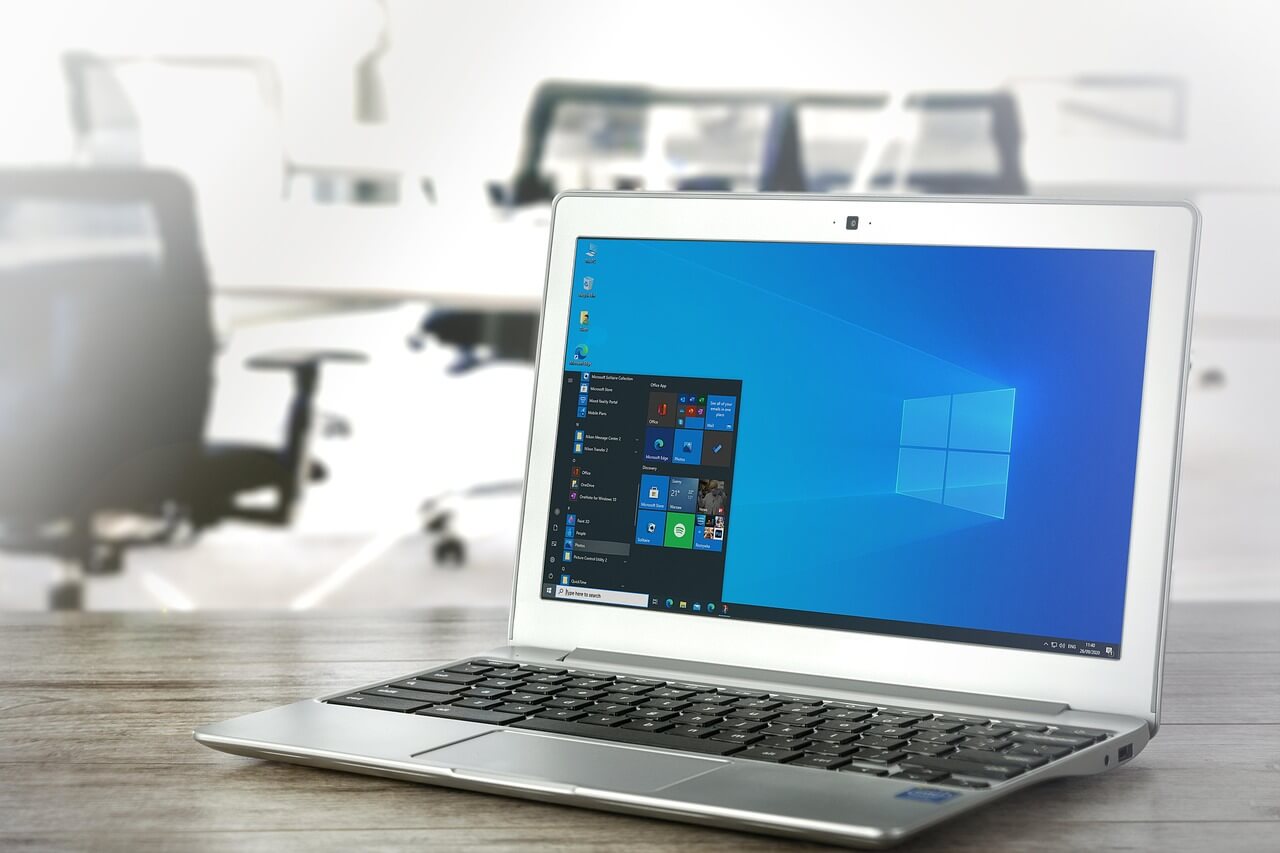How To Speed Up My Computer/Laptop Windows 11/10 [2025]
Want to make your computer faster? A slow computer can be really annoying. It takes up your time and makes work more difficult. But with a few easy steps, you can improve your laptop’s speed and make things run more smoothly.
Your computer slows down over time. Old files pile up. Programs start with Windows. The hard drive gets full. RAM gets used up. These things make laptop run slower. But you can fix this. You can increase computer speed easily.
This guide is here to help. These easy tips can make your laptop feel brand new. Let’s begin!
Part 1: Why You Should Speed Up Your Computer: Key Benefits
A fast computer makes life easier. It saves time and reduces stress. Here are the main reasons to increase computer speed and make a laptop run faster.
- Save Time Daily – Fast computers load programs quickly. You spend less time waiting. More time for important work.
- Better Work Performance – Slow computers hurt productivity. Fast ones help you work better. You finish tasks faster.
- Reduce Stress – Waiting for slow computers is annoying. Fast computers are smooth. Less frustration in your day.
- Longer Computer Life – Fast computers last longer. They don’t work as hard. This saves money on repairs.
- Better Gaming – Games need fast computers. Slow ones lag and crash. Fast ones run games smoothly.
- Multitasking Power – Fast computers handle many programs. You can work on several things at once. No more crashes.
- Energy Savings – Fast computers use less power. They finish tasks quicker. This saves on electricity bills.
- Professional Image – Fast computers look professional. Slow ones embarrass you in meetings. Speed matters for business.
Part 2: How to Speed Up My Computer: Best Methods
These tips can help your computer run faster. Each one fixes a different issue that slows it down. Try them all for the best results.
Method 1: Clean Up Disk Space
The Disk Cleanup tool removes unnecessary files. It’s one of the simplest ways to boost your laptop’s speed.
Windows stores temporary files everywhere. These files take up space. They make your computer work harder. Cleaning them helps you increase your computer’s speed quickly.
Why Choose Disk Cleanup:
- Removes gigabytes of junk files instantly
- Free built-in tool that’s always available
- Safe method that won’t harm your system
Steps:
- Type “Disk Cleanup” in Windows search. Click the app that appears.
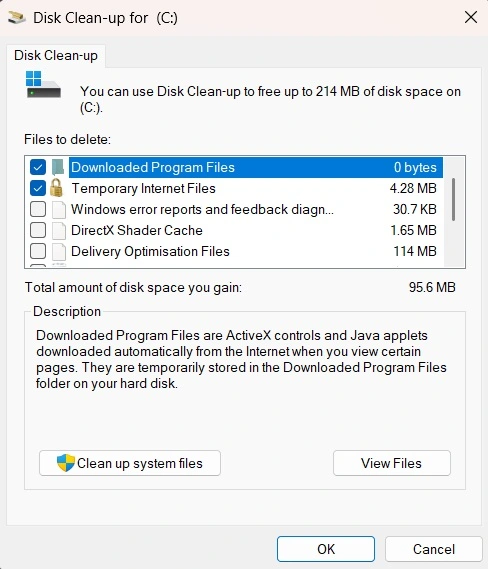
- Select your main drive (usually C:). Check all boxes except “Downloads.” Click “OK” to clean.
Method 2: Disable Startup Programs
Too many startup programs slow boot time. This method helps make computer run faster from the start. You’ll notice the difference immediately.
Startup programs load when Windows starts. Each one uses memory and CPU. Disabling unused ones helps increase computer speed significantly.
Why Choose Startup Management:
- Speeds up boot time by 50% or more
- Frees up RAM for programs you actually use
- Easy to undo if you need a program back
- Works automatically every time you restart
Steps:
- Press Ctrl + Shift + Esc. Then click the ‘Startup’ tab.
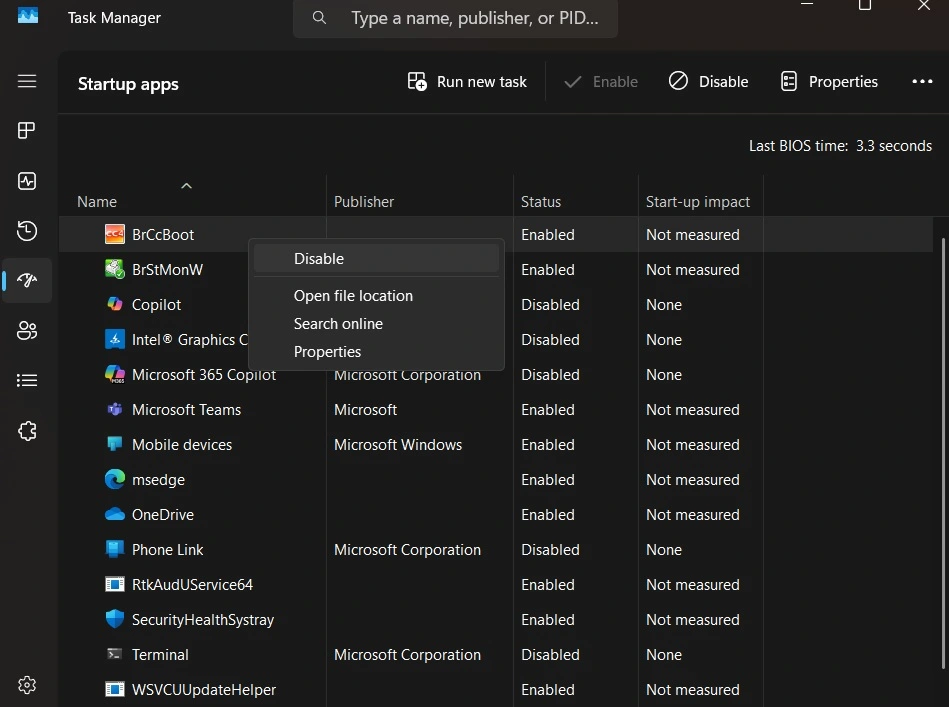
- Right-click programs you don’t need at startup. Select “Disable” for each one.
Method 3: Update Your Drivers
Old drivers cause speed problems. New drivers make the laptop run faster. Updating outdated drivers fixes many performance issues at once.
Driver updates include speed improvements. They fix bugs that slow your computer. Graphics drivers especially help increase computer speed for games and videos.
Why Choose Driver Updates:
- Fixes speed problems caused by old software
- Improves stability and prevents crashes
- Often includes performance optimizations
- Keeps your computer secure from threats
Steps:
- Right-click on ‘This PC’ and choose ‘Properties.’ Then click on ‘Device Manager’ from the options.
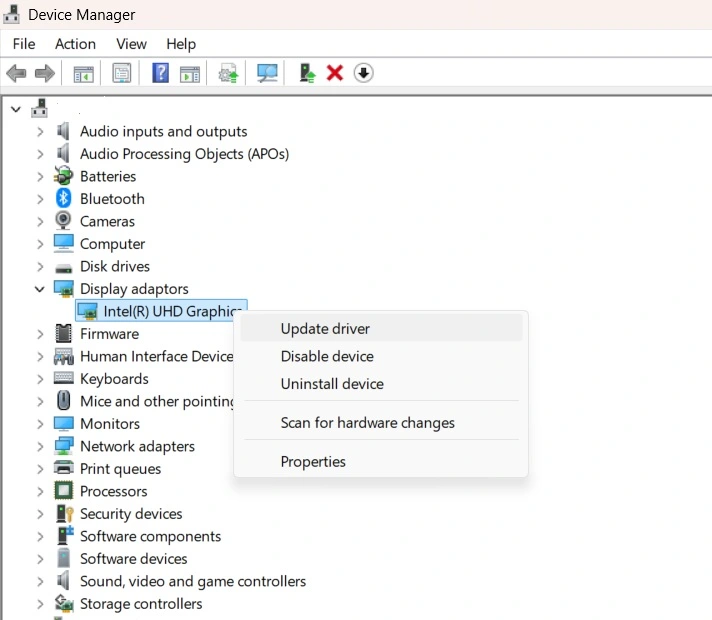
- Look for yellow warning signs. Right-click those devices and select “Update driver.”
Method 4: Add More RAM
RAM helps your computer manage several tasks at once. Upgrading it can improve speed, especially when using many apps.
When RAM is full, computers use slow hard drives instead. This makes everything sluggish. Adding RAM helps increase computer speed dramatically.
Why Choose RAM Upgrade:
- The biggest speed boost for multitasking users
- Permanent solution that lasts for years
- Relatively cheap computer upgrade option
- Works immediately after installation
Steps:
- Check current RAM: Press Windows + X, select “System.” Note your RAM amount under “Installed RAM Memory.”

- Get RAM that matches your computer from a tech shop. You can put it in yourself or ask a technician to help.
Method 5: Switch to SSD Storage
SSDs are way faster than older hard drives. It’ll feel like you got a brand-new computer.
Old-style hard drives work with moving parts, but SSDs use flash memory instead. This makes SSDs much quicker.
Why Choose an SSD Upgrade:
- Fastest possible speed improvement available
- Boot time drops from minutes to seconds
- Programs open instantly instead of slowly
- More reliable than traditional hard drives
Steps:
- Check your current drive: Open “This PC” and right-click your C: drive. Select “Properties.”

- Buy an SSD that fits your computer. Clone your old drive or reinstall Windows fresh.
Method 6: Run Windows Updates
Windows updates include speed improvements. They fix bugs that slow computers down. This helps make the computer run faster automatically.
Microsoft releases updates monthly. Each one makes small improvements. Together, they help increase computer speed significantly over time.
Why Choose Windows Updates:
- Free performance improvements from Microsoft
- Fixes known speed and stability issues
- Includes the latest security patches too
- An automatic process that runs in the background
Steps:
- Click the Start button. Select “Settings.” Choose “Windows Update”.
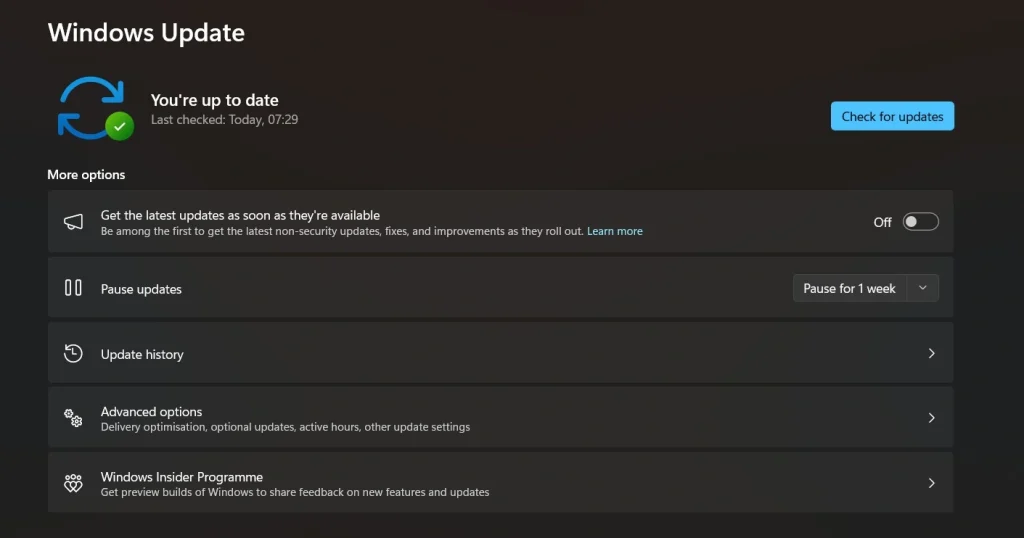
- Click the “Check for updates” button. Install any updates Windows finds available.
Method 7: Adjust Visual Effects
Windows uses fancy animations and effects. These look nice, but slow on older computers. Turning them off helps make laptop run faster.
Visual effects use graphics power and RAM. Older computers struggle with them. Reducing effects helps increase computer speed on budget machines.
Why Choose Visual Adjustments:
- Immediate speed boost on older computers
- Frees up RAM for important programs
- Makes everything feel more responsive
- Easy to change back if needed
Steps:
- Right-click “This PC” and select “Properties.” Click “Advanced system settings” on the left.
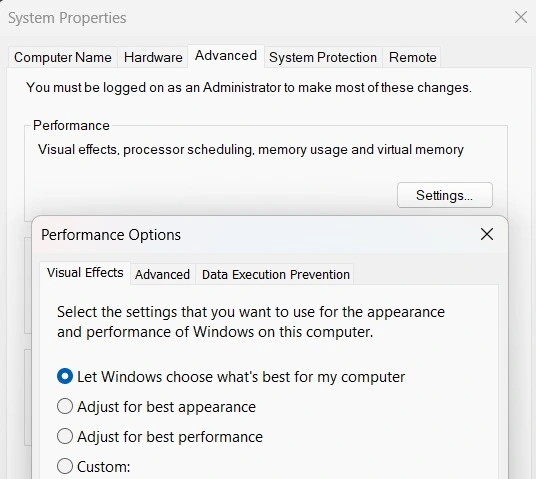
- Under Performance, click “Settings.” Select “Adjust for best performance” and click “Apply.”
Method 8: Clean Registry Files
The registry stores Windows settings. Over time, it gets cluttered. Cleaning it helps make computer run faster by removing junk entries.
Old programs leave registry entries behind. These slow down Windows searches. A clean registry helps increase computer speed and stability.
Why Choose Registry Cleaning:
- Removes leftover files from old programs
- Speeds up Windows startup and shutdown
- Fixes minor errors that cause slowdowns
- Optimizes system performance automatically
Steps:
- Download CCleaner from the official website. Install it on your computer safely.
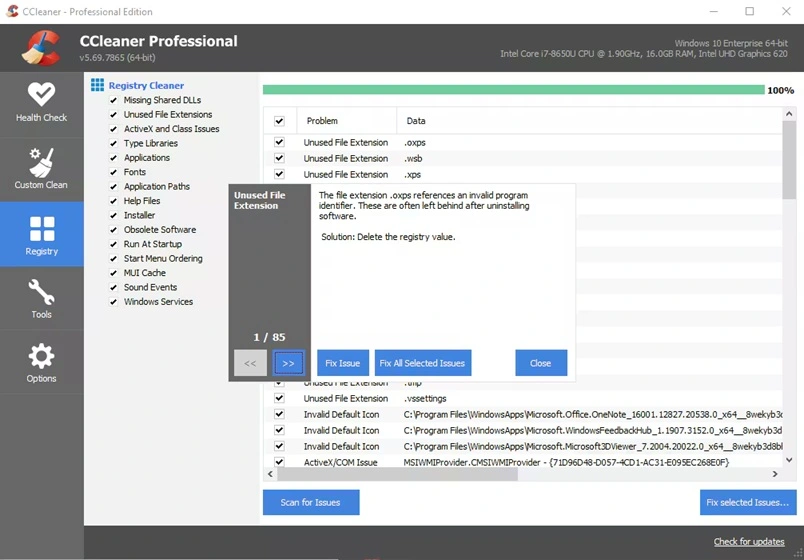
- Open CCleaner and click the “Registry” tab. Click “Scan for Issues” then “Fix Selected Issues.”
Author’s TIP
The best way to make a computer run faster is to combine methods. Don’t just try one thing. Use disk cleanup, disable startup programs, and update drivers together. This gives you the biggest speed boost.
Start with free methods first. Clean your disk space and disable startup programs. These help increase computer speed without spending money. If your computer is still slow, then consider hardware upgrades like RAM or SSD.
Remember to restart your computer after making changes. This helps Windows apply the improvements. Many people forget this step. Restarting completes the process to make laptop run faster effectively.
Part 3: Pro Tips to MakeYour Laptop Run Faster
These advanced tips help you get even more speed from your laptop. They work alongside the main methods above.
- Use Sleep Mode Instead of Shutdown – Sleep mode starts faster than a full boot. Your laptop resumes work instantly.
- Keep Desktop Clean – Too many desktop icons slow startup. Move files to folders instead of the desktop.
- Close Browser Tabs – Each tab uses RAM and CPU. Close tabs you don’t need to free up resources.
- Use Task Manager – Monitor which programs use the most CPU. Close heavy programs you don’t need running.
- Defragment Hard Drives – Traditional drives need defragmentation monthly. Don’t defrag SSDs, though.
- Check for Malware – Viruses slow computers significantly. Run Windows Defender scans regularly.
- Adjust Power Settings – Use “High Performance” mode when plugged in. This gives maximum speed.
- Uninstall Unused Programs – Remove programs you never use. They take up space and slow down startup.
Part 4: Hardware Upgrades to Increase Computer Speed
Sometimes software fixes aren’t enough. Hardware upgrades provide the biggest speed improvements. Here are the most effective upgrades.
Upgrade Your RAM Memory
RAM is the easiest hardware upgrade. It makes the biggest difference for multitasking. Most laptops allow RAM upgrades up to 16GB or 32GB.
Check your current RAM first. Windows 11 runs better with 8GB minimum. Windows 10 works with 4GB but prefers 8GB. More RAM helps you run many programs simultaneously.
How to Check RAM:
- Press Windows + X and select “System.”
- Look for “Installed memory (RAM)” in the specifications
Switch to SSD Storage
SSDs provide the most dramatic speed improvement. They’re 10-50 times faster than traditional hard drives. Your computer will feel like new.
SSDs come in different sizes. 256GB works for basic use. 512GB or 1TB is better for most people. Consider external storage for large files.
SSD Benefits:
- Boot time drops from 2 minutes to 15 seconds
- Programs open instantly
- File transfers happen much faster
- The computer runs quieter and cooler
Upgrade Your Graphics Card
Graphics cards help with games and video editing. They also speed up some Windows features. Desktop computers allow graphics card upgrades more easily than laptops.
Modern graphics cards include AI acceleration. This helps with video calls and photo editing. Even basic graphics cards improve performance significantly.
Part 5: Maintenance Tips to Keep Your Computer Fast
Regular maintenance keeps your computer running fast. These simple habits prevent slowdowns before they start.
Weekly Maintenance Tasks
Spend 10 minutes weekly on these tasks. They prevent major slowdowns and keep your computer healthy.
Weekly Checklist:
- Restart your computer at least once
- Empty your recycle bin completely
- Clear the browser downloads folder
- Close unnecessary browser tabs
- Check for Windows updates
Monthly Maintenance Tasks
Monthly tasks take more time but provide bigger benefits. Schedule them for when you won’t need your computer.
Monthly Checklist:
- Run full disk cleanup
- Check the startup programs list
- Update all software programs
- Run a Windows Defender scan
- Clear temporary internet files
Quarterly Maintenance Tasks
These tasks need doing every 3 months. They address deeper system issues that develop over time.
Quarterly Tasks:
- Check hard drive health
- Update all device drivers
- Review installed programs
- Clean computer fans and vents
- Back up important files
Conclusion
Learning how to speed up my computer saves time and frustration. These methods work for Windows 11 and Windows 10. Start with free software fixes first. Then, consider hardware upgrades if needed.
The most important steps are disk cleanup and startup management. These give immediate results. Adding RAM or switching to SSD provides the biggest long-term improvements. Regular maintenance keeps your computer fast permanently.
Remember that older computers have limits. Sometimes buying a new computer costs less than major upgrades. But these methods can add years to your current computer’s life. Try them all to make computer run faster than ever before.
FAQs
Q: What’s the fastest way to make a computer run faster immediately?
The fastest method is to disable startup programs and run disk cleanup. These take 5 minutes total and work immediately. You’ll see speed improvements on your next restart. They’re free and safe for any computer.
Q: How much RAM do I need to increase computer’s speed effectively?
Windows 11 needs 8GB minimum for good speed. Windows 10 works with 4GB but prefers 8GB. If you multitask heavily, 16GB provides the best performance. Check your current RAM before buying more.
Q: Should I upgrade to SSD or add more RAM first?
SSD upgrades provide bigger speed improvements than RAM for most users. If your computer has 4GB of RAM or less, upgrade the RAM first. If you have 8GB or more RAM, an SSD upgrade gives better results.
Popular Post
Recent Post
Supercharge Your Productivity: A Solopreneur’s and SMB’s Guide to Mastering Google Workspace with Gemini’
Picture this. It’s Monday morning. You open your laptop. Email notifications flood your screen. Your to-do list has 47 items. Three clients need proposals by Friday. Your spreadsheet crashed yesterday. The presentation for tomorrow’s meeting is half-finished. Sound familiar? Most small business owners live this reality. They jump between apps. They lose files. They spend […]
9 Quick Tips: How To Optimize Computer Performance
Learn how to optimize computer performance with simple steps. Clean hard drives, remove unused programs, and boost speed. No technical skills needed. Start today!
How To Speed Up My Computer/Laptop Windows 11/10 [2025]
Want to make your computer faster? A slow computer can be really annoying. It takes up your time and makes work more difficult. But with a few easy steps, you can improve your laptop’s speed and make things run more smoothly. Your computer slows down over time. Old files pile up. Programs start with Windows. […]
How To Fix Low Disk Space Error Due To A Full Temp Folder
A low disk space error due to a full temp folder is a common problem. Many users face this issue daily. Your computer stores temporary files in special folders. These files ensure optimal program performance, but they can accumulate as time goes on. When temp folders get full, your system slows down. You might see […]
How to Use Disk Cleanup on This Computer: Step-by-Step Guide
Computers getting slow is just the worst, right? Well, yes! Files pile up on your hard drive. Luckily, the Disk Cleanup tool on your PC is here to save the day. It clears out unnecessary files, giving your system the boost it needs to run smoothly again. A lot of users aren’t aware of the […]
Top 25 Computer Maintenance Tips: Complete Guide [2025]
Computer maintenance tips are vital for every PC user. Without proper PC maintenance, your system will slow down. Files can get lost. Programs may crash often. These computer maintenance tips will help you avoid these problems. Good PC maintenance keeps your computer running fast. It makes your hardware last longer. Regular computer maintenance tips can […]
Reclaiming Disk Space On Windows Without Losing Files: A Complete Guide
Running low on storage can slow down programs and trigger that annoying “low disk space” warning. Files accumulate over time, cluttering the drive. The good news? It’s possible to reclaim space without deleting anything important. Reclaiming disk space on Windows without losing files is easier than you think. Your computer stores many temporary files, old […]
Fix Issues Downloading From the Microsoft Store on Windows 11, 10 PC
Do you get excited when you’re about to download a new app or game? You open the Microsoft Store, click the download button… but nothing happens. Or maybe it starts and then suddenly stops. Sometimes, strange messages pop up like “Something happened on our end” or “Try again later.” That can be really annoying. But […]
Fix Low Disk Space Errors Quickly On Windows 11, 10 PC [2025]
Low disk space errors can slow down your Windows PC. These errors appear when your hard drive runs out of room. Your computer needs space to work properly. When space runs low, programs crash and files won’t save. Windows shows warning messages about low disk space. Your PC may freeze or run slowly. You might […]
How To Uninstall Software From My Computer: Complete Guide [2025]
Learning how to uninstall software from my computer is a key skill. Every PC user needs to know this. Old programs take up space. They slow down your system. Unused software creates clutter. When you remove a program from computer, you free up storage. Your PC runs faster. You also fix issues caused by bad […]
























